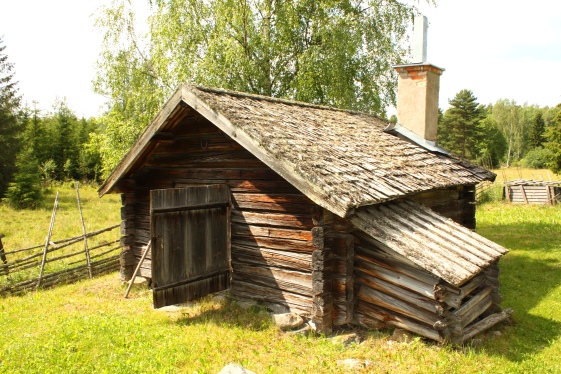
Crime and Punishment
It took about a hundred years for Gustav Vasa’s Lutheran reforms to take hold. People were given examinations to see how much they knew about the bible and Lutheran teaching. God help you if you couldn’t pass the test. In 1617 a new law demanded that all Catholics leave Sweden within three months after its passing, but there are still some Catholics in Sweden today, and Swedes still celebrate Santa Lucia at Christmas time.
When Gustav Vasa had been king for five years he decided it was time to get married. He was thirty-two years old, but didn’t have much of a kingdom, and people weren’t sure how long what he did have would last. This did not make him the most eligible bachelor in town. He wore a lot of fancy clothes in an attempt to look cool and improve his image.
Gustav Vasa
Wife No. 1 Katarina von Sachsen
He finally married Katarina von Sachsen, who
was the daughter of a prince who’s kingdom was even smaller than
Vasa’s, but the prince had a small army of mercenaries which seemed like
a good deal. Katarina was eighteen when they married and managed to
give birth to a son, Erik. Almost everyone was named Erik in those days.
It was not a happy marriage. Katarina only spoke German, and Vasa only
Swedish. Katarina died two years later while dancing with her brother in
law.
Wife No. 2 Margareta Leijonhufvud
One year later Vasa married Margareta
Leijonhufvud who was Swedish and a good breeder. She was twenty years
younger than him and had a whole litter of children, ten to be exact.
Margareta also died early, probably from having too many children.
The faces in these first two paintings look pretty much the same, if you ask me. I don’t think the artists paid much attention to what the queens really looked like.
The faces in these first two paintings look pretty much the same, if you ask me. I don’t think the artists paid much attention to what the queens really looked like.
Katarina Stenbock
This time the artist got it right . . . or wrong, depending on how you look at it.
Vasa married Katarina Stenbock next. He was fifty-five. She was sixteen,
and a not-so-distant relative. It was another unhappy marriage and no
children came of it, which was probably a good thing. Gustav passed a
new law that made it illegal for priests to bless the marriage of two
people, “…when one is young and the other old.”
* * *
Katarina’s first born, Erik, now six, and two year old Johan, one of
Margareta’s offspring, sat with Vasa on the throne. Gustav Vasa summoned
his councilors and bishops and had them kneel before him, placing their
hands on his sword. He ordered them swear to allegiance to the King and
all that inherited his throne, making Sweden a hereditary kingdom.
Son Erik – better known as Erik XIV- later became the first king to
inherit the throne by law. He was pretty smart, spoke several languages,
and was well versed in astrology, art, and music. He wanted his
coronation to be a major event, and had some Flemish masters create a
crown, scepter, key, and orb made out of gold and precious stones. I
wouldn't mind having one of those orbs to fool around with, but the
servants tell me they can’t afford one.
Ummm. Where was I? Oh yes, Erik. Like I said, he was smart, but he was unstable.
Erik’s Crown




















